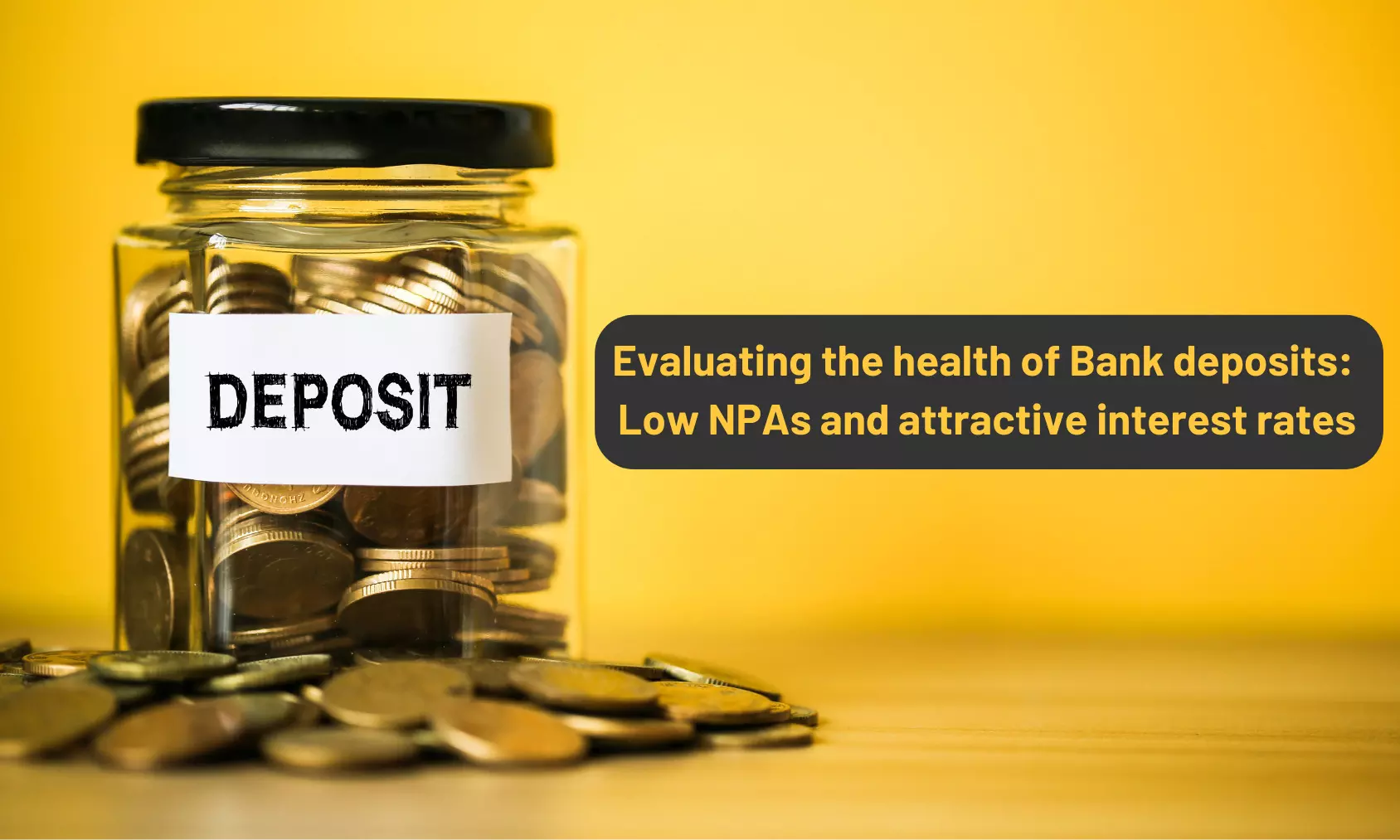Evaluating the health of Bank deposits: Low NPAs and attractive interest rates
Explore the current state of bank deposits in India. Learn how low NPAs and high interest rates enhance safety for depositors, while understanding the risks associated with cooperative banks.
Evaluating the health of Bank deposits: Low NPAs and attractive interest rates

Interest rates have peaked in the current economic cycle, but with inflation easing, central banks like the US Federal Reserve and the Reserve Bank of India (RBI) are expected to lower rates soon. This environment has made bank fixed deposits (FDs) attractive for investors due to the high rates currently available. However, past incidents where bank withdrawals were temporarily blocked have raised concerns about the safety of these deposits. Here's an in-depth look at the current state of bank deposits and their safety.
Significant Improvement in India's Banking Sector
1. Reduction in Non-Performing Assets (NPAs):
- Historical Context: In 2017-18, India's scheduled commercial banks experienced a peak in gross NPAs at 11.2%, with net NPAs at 6%.
- Current Figures: As reported in the RBI’s Financial Stability Report (December 2023), gross NPAs fell to 3.2% and net NPAs to 0.8% by September 2023.
- Public vs. Private Banks: Gross NPAs in public sector banks were at 4.4%, whereas private sector banks had a lower rate of 2.1%.
2. Strategies to Manage NPAs:
- Government Actions: Loan write-offs, recovery initiatives, and government recapitalisation efforts have significantly reduced NPAs.
- RBI's Measures: The RBI has imposed stricter norms on asset quality, management practices, and capital adequacy to ensure timely resolution of NPAs and prevent further financial instability.
3. Implications for Depositors:
- Enhanced Safety: The decrease in NPAs signifies improved financial health and greater safety for depositors.
- Public Sector Assurance: Government backing adds an extra layer of security for depositors in public sector banks.
- Private Sector Reliability: Leading private sector banks, known for their strong financial health, provide a safe haven for depositors.
Cooperative Banks: A Closer Look
1. Purpose and Challenges:
- Role: Cooperative banks aim to promote financial inclusion by serving specific communities or regions, contributing to broader economic development.
- Issues: Despite their purpose, cooperative banks face significant challenges, including high NPAs and frequent failures.
2. Notable Failures:
- PMC Bank Incident: The 2019 failure of Punjab & Maharashtra Co-operative Bank (PMC) highlighted the vulnerabilities in the cooperative banking sector.
- Recent Closures: Several cooperative banks were shut down in 2023-24 due to poor management, governance issues, and financial oversight failures.
3. Regulatory Measures:
- Dual Regulation: Cooperative banks are regulated by both the RBI and state governments, leading to complex supervision challenges.
- RBI Initiatives: The RBI has implemented stricter regulations and conducted stress tests to enhance the financial health of cooperative banks, but challenges remain.
4. Current Status:
- NPA Levels: As of September 2023, urban cooperative banks (UCBs) had gross NPAs of 10.9%, up from 8.7% in March 2023.
- Stress Test Results: An RBI stress test on 214 major UCBs indicated that 43 would fail under medium stress and 57 under severe stress, highlighting higher depositor risk.
Protecting Depositor Interests
1. Deposit Insurance:
- DICGC Coverage: The Deposit Insurance and Credit Guarantee Corporation (DICGC) insures each depositor up to Rs 5 lakh in the event of a bank's liquidation.
- Recent Changes: This coverage was increased from Rs 1 lakh in February 2020, and the timeline for insurance settlement has been significantly reduced.
2. Choosing the Right Bank:
- Public Sector Banks: These banks offer a higher level of safety due to government backing.
- Private Sector Banks: Leading private sector banks are reliable due to their strong financial health.
- Cooperative Banks: Given the higher risk, depositors should prioritise insurance coverage when considering cooperative banks.
India's banking sector has significantly improved, with a notable reduction in NPAs and robust measures to ensure financial stability. Public and private sector banks are generally safer for fixed deposits due to their lower NPAs and government backing. In contrast, cooperative banks, despite their critical role in financial inclusion, face ongoing challenges that make them riskier for depositors. By understanding these dynamics and utilising deposit insurance, investors can make informed decisions and protect their bank deposits.

